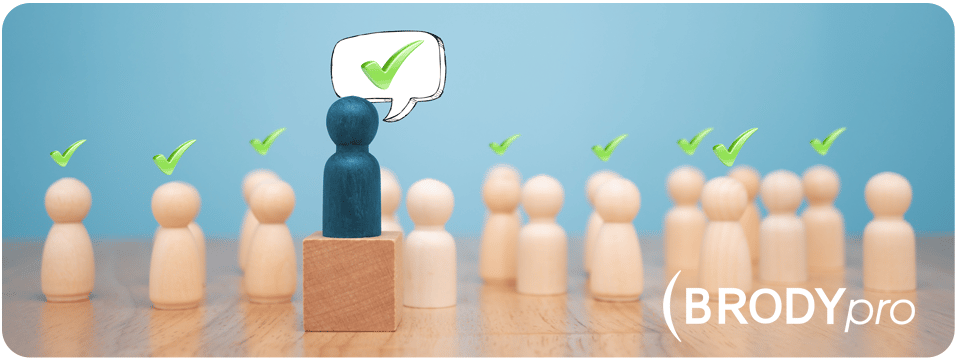Audience Attitude
If you need to persuade an audience, the difference between success and failure may rest on your ability to judge your audience’s attitude and respond appropriately.
Before you decide how to organize your talk, know which of the following types of audiences you’ll be addressing:
- Favorable: You are preaching to the choir, people who already share your opinions, and probably want the same things you want. It’s rare to get an entirely favorable audience; if you do, your task will be much easier.
- Uninformed: They are neither for nor opposed to what you have to say — in fact, they know nothing about it. Your job is to educate them, using facts and arguments that will sway them to your opinion.
- Apathetic: This audience couldn’t care less about what you have to say, usually employees who are required to attend your talk, training, or presentation. Get through to them by showing exactly how they’ll benefit from whatever you are proposing. (What’s in it for them?) Create the need!
- Hostile: Although no one wants a hostile audience, it’s better to know going in so you can prepare. What is the source of their hostility? What are their issues: time, expense, philosophy, you and what you represent, etc.?
- Mixed: There are two types of mixed audiences: the favorable mix and the hostile mix. The favorable mix includes favorable, uninformed, and apathetic members. You’ll have to inform the uninformed and convince the apathetic there’s a genuine need or real benefit to them.
Warning: If even one audience member expresses hostility, the entire audience can shift quickly to his point of view. At this point, you are dealing with a hostile mix. Your challenge? Disarm the hostile members and win them over as soon as possible.
If you are prepared for a hostile audience, you will be ready for any mixed group.
Now that you know the type of audience you will be addressing, it’s time to organize your persuasive presentation.
When selecting a method for organizing your persuasive presentation, it’s critical to keep the audience’s attitudes in mind (hence the prior exercise!)
Methods of Organization
A. Proposition to Proof. In this method, you state your proposition right upfront, at the beginning of your presentation. Then, prove your proposition using three to five points of evidence (Logos), emotional appeal (Pathos), and transitions to reinforce and connect your ideas. Finally, review the evidence and end with a strong closing statement.
Note: This method works well with favorable audiences, and can sometimes work for uninformed or apathetic. It is not a good choice for a hostile or hostile mixed audience. They are likely to be immediately offended by whatever you present, and it will be challenging to overcome that.
This method is also useful when speaking to senior leaders. They want to know what you are proposing from the beginning, and rarely have the patience to sit through explanations before getting to the point.
B. Motivated Sequence (Problem to Solution). This method was developed by Alan Monroe at Purdue University in the 1930s and is the method most used in sales. The motivated sequence either identifies a need or makes the audience aware of a need. You are building a case that a need exists. You then supply the means to satisfy that need or solve the problem.
This method can work well for uninformed and apathetic audiences. You can also use it with a hostile or mixed audience, keeping in mind that you’ll need to address their concerns early or else the rest of your presentation may fall on deaf ears.
Here are the five steps:
- Attention: Grab the audience’s attention with a thought-provoking fact or statement about your topic.
- Need: Describe a need the audience members have or problem that needs to be solved. With logic and emotional appeals build their belief that something must be done.
- Satisfaction: Tell them how the need can be met or how their problem can be solved.
- Visualization: Describe the positive picture of what the future will look like with your proposed solution in place (and what it will be like without it).
- Call to Action: Tell the audience members what they need to do. Make your appeal for action.
C. Reflective. Using this method, the problem is stated and proven right at the beginning of the presentation. This works most effectively if the speaker and audience then agree on a criterion to evaluate each of the possible solutions and to ultimately make a decision.
This approach is ideal for a hostile audience that is also analytical. After the problem and the criteria are agreed upon, solutions are offered and evaluated against the requirements. Effective speakers often present the positive points of the solutions they don’t want and then undermine them with evidence to the contrary (using the agreed-upon criteria as a basis of evaluation). Then they present the best solution last – supporting it with plenty of evidence.
Does your team need to improve their ability to present persuasively? Check out BRODY’s Persuasive Speaking training.
